Food Scrap Stock - an easy homemade stock recipe using vegetable scraps and leftover chicken / beef bones. Repurpose those scraps into a delicious and nutritious food scrap stock!
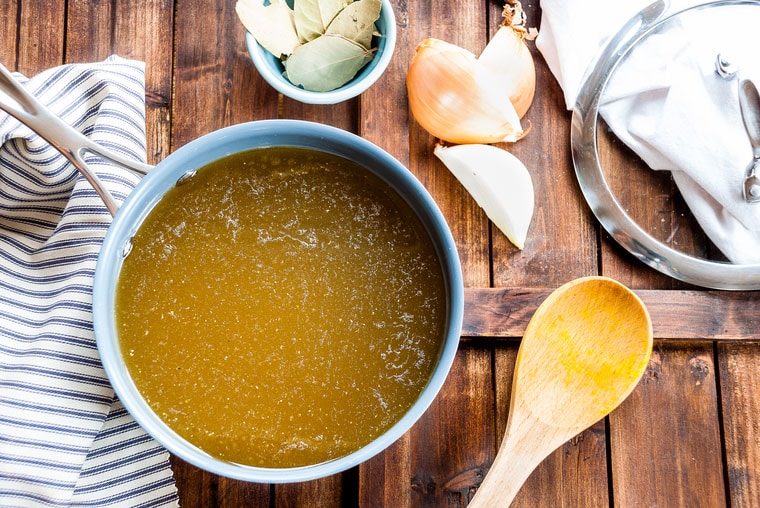
Hi there! Below you'll find affiliate links to great products that we enjoy using in our own kitchen.
Homemade stock gives your food scraps a second chance. And it's way better than the store bought stuff - which used to be my go-to stock. We use our food scrap stock in basically everything.
We're always striving to reduce our food waste. Just another reason we make food scrap stock. Save up those onion peels, garlic skins, parsley stems, and chicken bones to make a delicious stock.
Stock vs Broth
Broth is generally made with vegetables and meat (except for veggie broth). Whereas stock is made with vegetables and the bones of chicken, beef, or turkey-and stock is generally cooked for longer.
It's confusing… But stock and bone broth (different than regular broth) are basically the same thing. Though bone broth will be more gelatinous due to the specific types of bones used to make it.
Bone broth is purported to be a health elixir that can cure all-from the common cold to osteoporosis. Let's take a closer look.
Proponents claim that the collagen in bone broth can help improve skin, hair and nail strength.
Boiling bones yields collagen-a type of protein made up of several amino acids. But we don't absorb collagen altogether, we absorb the individual amino acids.
Keep in mind, our bodies (including hair, skin and nails) need amino acids to repair themselves, but if other parts of our bodies have a greater need, the amino acids will go there first.
The Benefits of Bone Broth
Bone broth has also been claimed to improve immune function. Studies show the potential benefits of eating chicken soup (especially made with stock) while you're sick. So, drinking bone broth may aid in lessening cold symptoms and help you recover faster.
Further benefits include reducing inflammation, building muscle and improving mood. The benefits of bone broth haven't been extensively researched, so it's difficult to know for sure...
Either way, drinking/using bone broth (stock) will provide you with some awesome nutrients like amino acids, magnesium, potassium, phosphorus and calcium.
So what's the verdict??
Although not some miracle cure broths & stocks do contain LOTS of nutrients and may improve immune function. All in all, bone broth and stock can add loads of flavor to soups, rice, chicken, essentially anything!
Making stock at home is super easy and it's such a great way to give those food scraps a second life. Test out our simple Food Scraps Stock recipe. This recipe is flexible, allowing you to use whatever you happen to have on hand!
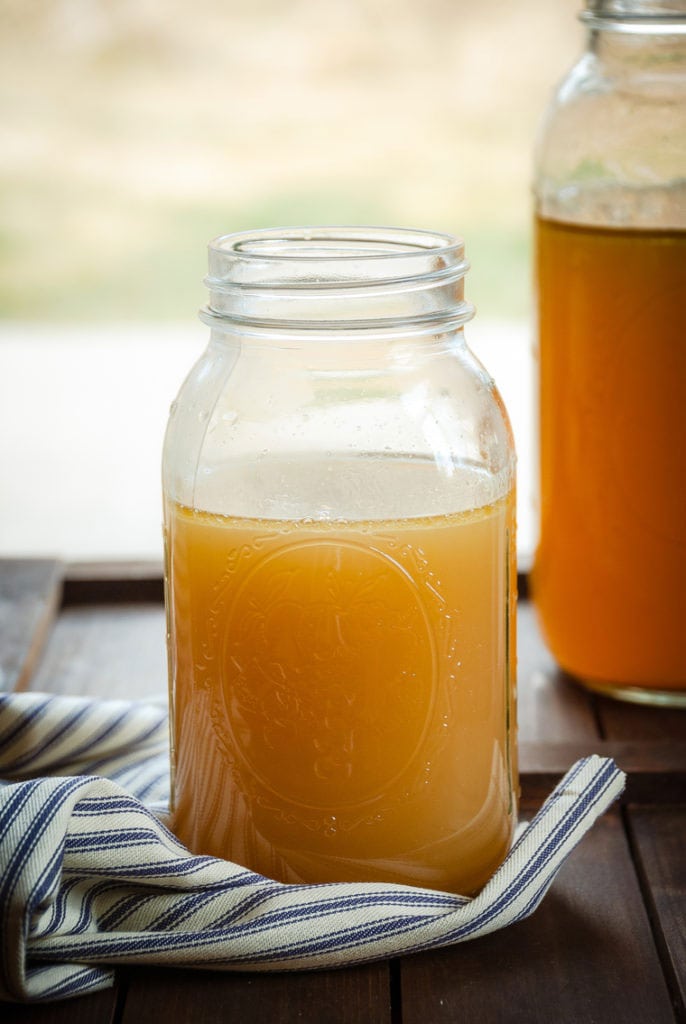
Are you ready to dive in and make this simple Food Scrap Bone Broth? Let's go!
1 - Collect your food scraps. I keep a
2 - Add your scraps to a
I'll often make it a
3 - Strain the stock using a
4 - Storing: Use immediately, store in the fridge for up to 3-4 days, or in the freezer for up to a year. To thaw, simply remove the stock from the freezer and transfer to the fridge the day before.
That's it! A super simple way to use up those food scraps and turn them into something delicious!
Food Scrap Stock: Tips, Tricks and Tools
Save your scraps: Most food scraps are great for stock. I keep a bag or container in the freezer and add my scraps throughout the week. Once the container is full, I'm ready to make stock!
What to save for stock: carrot and celery ends, onion peels, garlic skins, herb stems, kale stems, lemon and lime rinds, herbs of any kind, the woody ends of asparagus, broccoli stems (though these can be eaten just like broccoli!), squash peels, zucchini ends, scraps from bell peppers, leeks, green onions, mushrooms, corn cobs, really about any veggie scraps.
Some ingredients like foods from the cabbage family, cilantro, a lot of carrot greens can make the stock bitter, so don't go too crazy with these foods. Also save bones from chicken, beef, pork, fish, etc.
What to avoid in stock: avocado pits, stone fruit pits (they're toxic), banana peels, rhubarb leaves, anything that is moldy.
Freeze for later: Let your stock cool then transfer to a freezer-safe container and freeze for up to a year. Keep in mind, liquid expands as it freezes so give the stock a little extra room in the container.
If you're using a mason jar to store your stock, leave at least an inch of room at the top or you may end up with an exploded mason jar and frozen stock all over your freezer. I usually place the stock in the fridge and then transfer it to the freezer - it's not a good idea to place hot liquid right into the freezer.
Make it a veggie broth by omitting the bones and adding extra veggies. Give your food scraps a second life and use what you have on hand.
How to use Food Scrap Poultry Stock: Use it as a soup base, use instead of water for cooking rice, curry, chili, the list goes on...
We hope you love this simple Food Scraps Poultry Stock!
Love this simple Food Scrap Poultry Stock recipe? Check out our other Seasonal Soup recipes like this Italian Kale + White Bean Soup or our Vegetable Minestrone Soup.
Did you enjoy this Food Scrap Stock as much as we do?
Comment below! And rate the recipe to let us know how it turned out! Not cooking today? Save this Food Scraps Stock for later by pinning it to your Scrappy Recipes Board and make sure to tag us at The Crooked Carrot Instagram to show us your Food Scraps Poultry Stock creations!
📖 Recipe
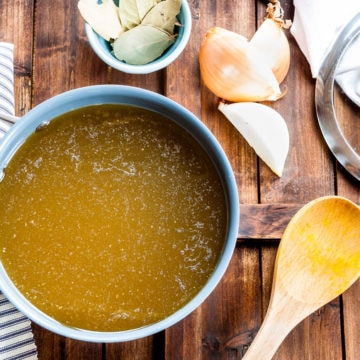
Food Scrap Stock
Ingredients
- vegetable scraps I usually accumulate scraps (the ends of celery, carrots and leeks). I wait until I have filled a ½ gallon bag with scraps before making stock.
- 3 cloves garlic whole
- 1 onion (medium) roughly chopped
- 4 sprigs parsley
- 2 sprigs thyme
- 1 tablespoon black peppercorns
- 1 bay leaf
- 8 cups water depends on size of slow cooker
- bones (chicken/turkey) from 2 chickens or 1 turkey
Instructions
- Cook: Combine all ingredients in a slow cooker and cook over low heat for 12-24 hours.
- Strain: Once cooked, strain and store in a glass container - a large mason jar will do the trick!
Notes
Nutrition
Disclaimer: Some of the links above are affiliate links. This means that should you purchase something through the link, The Crooked Carrot will receive a small commission. The item cost remains the same regardless of whether you purchase through our link or not. Any commission earned simply helps us continue to provide all our great content to you. From seasonal recipes to simple nutrition insights & sustainable zero waste tips, we have lots more to give!


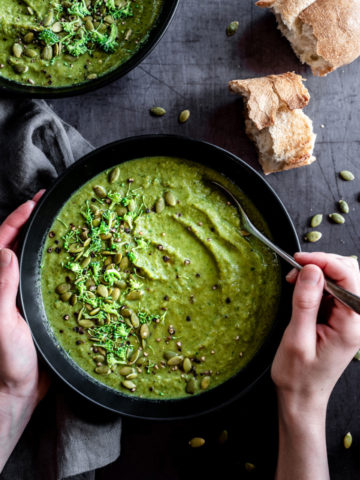
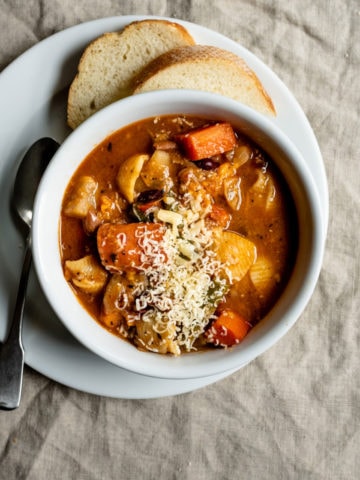
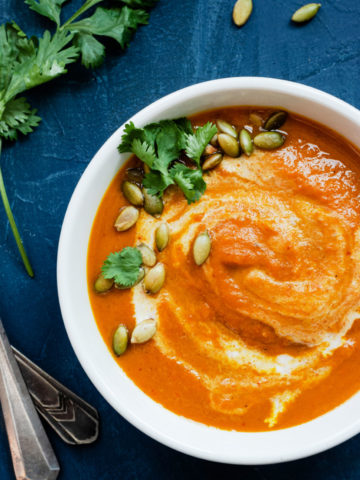
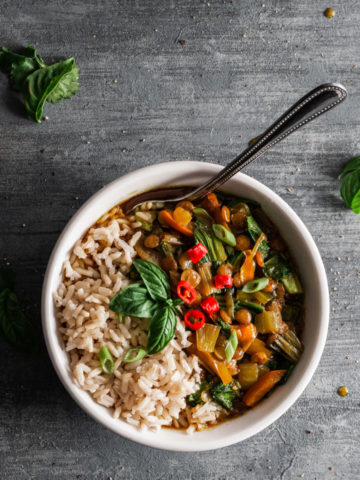
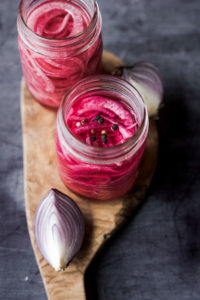


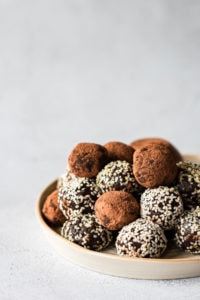
Leave a Reply